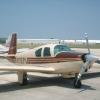-
Posts
4,569 -
Joined
-
Last visited
-
Days Won
32

cliffy replied to cliffy's topic in General Mooney Talk

cliffy replied to Max Clark's topic in Modern Mooney Discussion

cliffy replied to Born2Fly's topic in Vintage Mooneys (pre-J models)

cliffy replied to BrettD's topic in Vintage Mooneys (pre-J models)

cliffy replied to Fysiojohn's topic in Vintage Mooneys (pre-J models)

cliffy replied to Fysiojohn's topic in Vintage Mooneys (pre-J models)

cliffy replied to Fysiojohn's topic in Vintage Mooneys (pre-J models)

cliffy replied to moodychief's topic in Vintage Mooneys (pre-J models)

cliffy replied to Tim VanDenHoek's topic in General Mooney Talk

cliffy replied to Tim VanDenHoek's topic in General Mooney Talk
We have placed cookies on your device to help make this website better. You can adjust your cookie settings, otherwise we'll assume you're okay to continue.